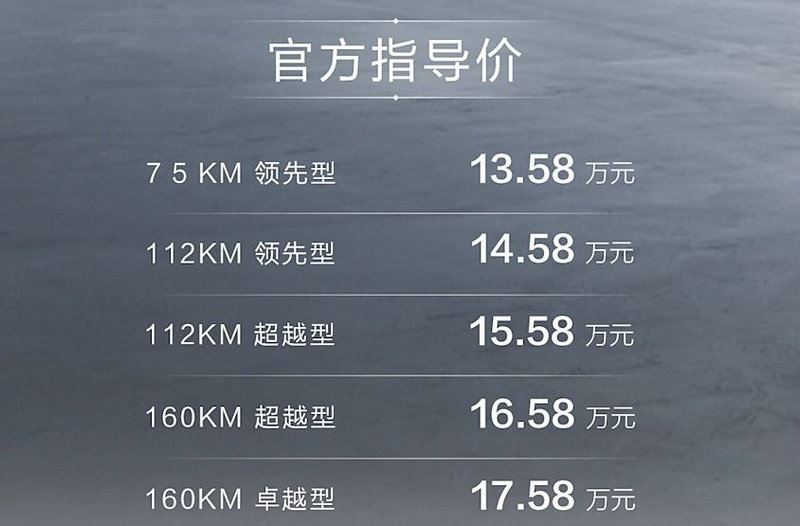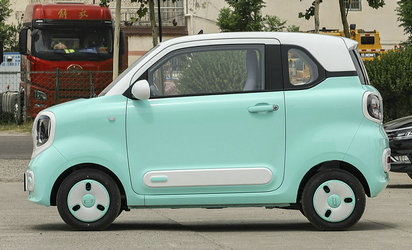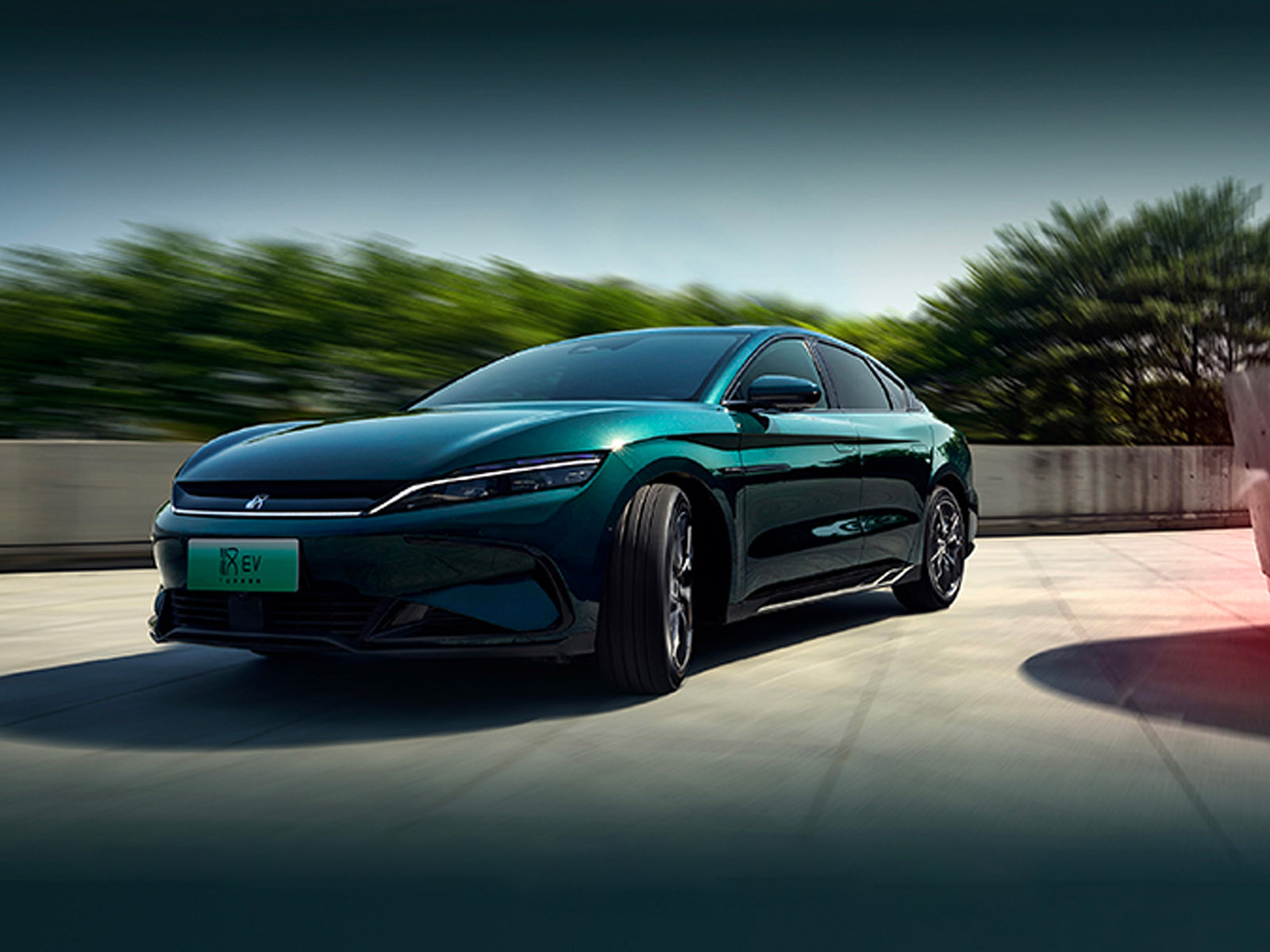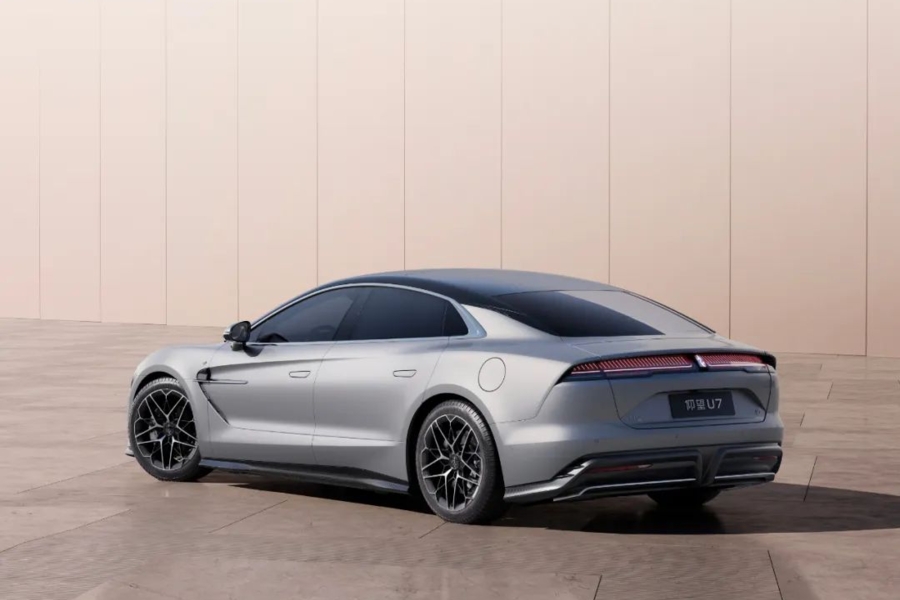Wang Chuanfu’s YangWang is being looked up to(YangWang in Chinese means looking up)
In the past year, China has launched an endless stream of new electric vehicle models. Relevant data shows that for every two new energy vehicles launched globally in 2022, one will come from China.
Among the many new domestic electric vehicles, there is no doubt that the YangWang U8 and U9 just released by BYD at the beginning of 2023 are the most popular among them and the most shocking to the outside world.
This is not only because at the press conference, the YangWang U8 demonstrated technologies such as tank U-turning and water floating that clearly surpassed the mainstream electric vehicles on the market. More importantly, this is also the first time that the price of a domestic electric vehicle has reached over one million.

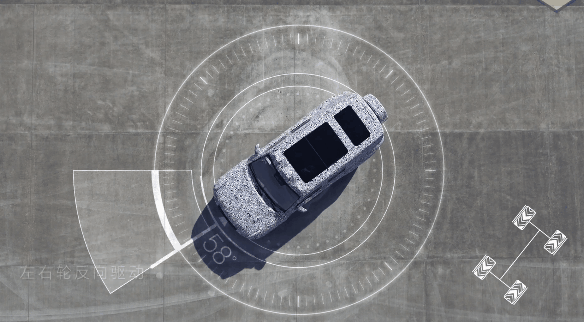
In the week when BYD released its new car, many media conducted detailed analysis of BYD YangWang and its new "YiSiFang" technology from multiple dimensions such as product and brand.
But there is one question that I think is still ignored, and that is how to evaluate:
What role does BYD YangWang and "YiSiFang" technology play in the historical process of the fifth disruptive technological revolution in the automobile industry?
Or to put it simply, if you have a budget of one million to buy a car now, why not buy a Porsche Taycan or Tesla Model S, but start paying for a BYD YangWang?
01
Looking at the history of the automobile industry over the past one hundred years, we will find a pattern:
The rise of almost all new car brands occurs at key nodes of several automotive technology revolutions, and the birth of high-end car brands is inseparable from the maturity of a new top-level core technology.
For example, after the first industrial revolution, the steam engine took the lead in becoming the core source of power for human beings to propel machines. However, until the mid-19th century, during the 20 years when the steam engine was most prosperous, there were still weaknesses that were unstable and difficult to control. More than 10,000 accidents occurred. A boiler explosion occurred.
An engine like this that can lift passengers into the sky every now and then is not reliable at all, and mature cars have become an unattainable dream.
The first four-stroke internal combustion engine that initially solved the safety problem was invented by a German named August Otto.
In 1867, after summarizing the existing scientific theories at the time and going through many failed attempts, Otto finally created a reciprocating piston four-stroke internal combustion engine. It was not only safer and easier to control, but its thermal efficiency also reached the leading level at the time. 14%.

The emergence of the Otto four-stroke internal combustion engine can be said to be the foundation of modern automobiles and a key node in the first disruptive technological revolution in automobiles.
Members of the Alto internal combustion engine R&D team reaped the dividends of this wave of technological innovation, and some of them later founded Mercedes-Benz, Maybach and BMW respectively.
The power problem of the car was solved, but soon the automobile industry faced a second unsolvable problem, which was the high selling price due to unreasonable production processes.
The company leading this round of technological revolution is Ford of the United States.
In 1913, Henry Ford was inspired by the slaughterhouse assembly line and created the world's first automobile production line, reducing the assembly time of a car from the original 12 hours to 90 minutes.

Due to the adoption of more efficient production methods, the time, cost, manpower and other resources required have dropped significantly, allowing the price of Ford cars to drop from US$850 to less than US$300.
By 1924, Ford was producing a car every 24 seconds on average, and workers on the assembly line could buy one with three months' wages.

By 1927, Ford's sales accounted for 50% of the world's total automobile sales, becoming the biggest beneficiary of the second round of automobile technology revolution.
Similarly, the third disruptive technological revolution in automobiles was the introduction of aerodynamic research results into automobile design in the late World War II. The Volkswagen Beetle was the product of this technological revolution.

The Beetle was considered a masterpiece of streamlined design at the time. The vehicle had minimal wind resistance, a solid body structure and chassis, and was both practical and durable.
With this car selling well in Europe and the United States, Volkswagen not only quickly grew to become the number one automobile company in Europe and the fourth in the world, but also made a huge economic contribution to Germany's post-war reconstruction.
The fourth automotive disruptive technology revolution is the automotive electronics revolution from the late 1980s to around 2004. We are familiar with the engine management system, ABS anti-lock braking system, ESP electronic stability program, as well as airbag control, intelligent Turning headlights, tire pressure monitoring, etc. are mostly products of this revolution.
Japanese brands such as Toyota and Honda are the beneficiaries of this round of technological revolution.
The fifth automobile electrification revolution is an era that all of us are experiencing personally, and it is also the story that all automobile brands are currently writing.
This round of technological revolution, in addition to achieving the goal of allowing humans to use cleaner and cheaper energy, the most important thing is to achieve precise control of cars that has never been achieved in the era of gasoline vehicles through electrification, or in other words In other words, the car must be transformed from a traditional mechanical device into a more intelligent robot.
02
The first leader of the automobile electrification revolution is undoubtedly Tesla. Its disruptive contribution started with Model 3. Model 3 gave the car for the first time a super brain similar to several computers. Able to achieve precise control of the car through centralized decision-making.
How to correctly understand the above sentence?
To give an example, for example, in the past, the electronics and electrical components of traditional petrol vehicles, even luxury cars, used a distributed structure.
Each car is equipped with many microcontrollers. The total number of microcomputers on the car is as many as twenty or thirty. You can also understand this as the enfeoffment system in ancient Chinese society. Different areas on the car have different kings.
The Tesla Model 3 began to bring all microcontrollers together and use a domain controller structure, which is similar to using a super brain to solve all decision-making problems. You can understand it as the county system of ancient Chinese society. Everything is important. Decisions are made by the central government.
A direct benefit of this is that each area in the car no longer works independently, pushing intelligence forward a big step.
For example, you will find that it is not until the era of electric vehicles that cars become like mobile phones. Manufacturers can push a new version to you every now and then based on user feedback and needs.
In the first half of 2022, CITIC Securities spent two months dismantling a Tesla Model 3 from beginning to end. From the electronic and electrical architecture, thermal management system and other aspects, it fully explained the advantages of Tesla. Very clear.
But the problem is that judging from the results of the brokerage dismantling, Tesla has only achieved the step of using a unified brain to make decisions, and domestic new energy vehicles have also caught up with this step. But if we use the human body as a metaphor:
Although Tesla now has a super brain, its limbs still have no joints, tendons, or nerve endings, and it still cannot achieve the goal of subversive precise control of the car.
It can be said that if there are 10 steps in the automotive electrification technology revolution, companies represented by Tesla stopped moving forward after completing 4 or 5 steps a few years ago. The rest of the way is until BYD YangWang After the emergence of YiSiFang technology and the technology it is equipped with, we finally saw hope.
How exaggerated has BYD YangWang's precise control of the car body reached?
All experienced drivers know that there is an extremely dangerous driving scenario on the highway, which is a sudden tire puncture of the car.
The accident rate after a high-speed tire blowout is almost 100%. At the same time, if the speed when the tire blows out exceeds 120 yards per hour, the mortality rate after a tire blowout exceeds 80%.
This problem is unsolvable whether it is placed on traditional oil-based vehicles or on those previous electric vehicles. It has now been solved by BYD.

In the past, it was common sense that if the brakes were broken, the car would not be able to brake, but BYD YangWang can achieve a stopping distance of less than 40m from 100 kilometers without the brakes working.
BYD YangWang can achieve agile steering capabilities of less than 12 meters when the steering gear is not working, allowing large SUVs to have the same flexibility as A0-class cars.
The car can be controlled without the steering and braking systems of a traditional car. From this point of view alone, it is enough to show how disruptive BYD YangWang is this time.
Not to mention, in addition to the above-mentioned functions, it can also achieve dry pulling up sand slopes, floating and wading steering to get out of trouble, and tank U-turns on various road surfaces.
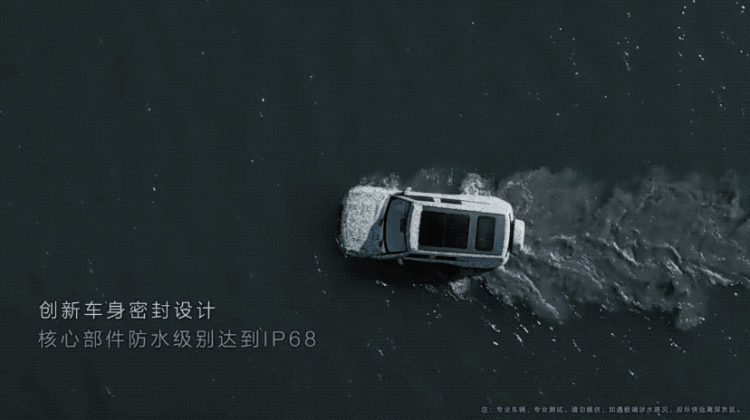
In addition to these functions, the YangWang series released by BYD this time also gives people the feeling of a hard bridge and a hard horse in terms of hardware.
For example, the BYD YangWang U8 is positioned as a pure electric hardcore off-road vehicle. As a super large off-road vehicle, it can accelerate from 0 to 0 to 100 mph in just 3 seconds. It can easily adapt to the performance needs of various extreme scenarios such as street, off-road, and track.
Many people who have watched the press conference have the same idea as me. They always feel that BYD YangWang's products are so popular this time that they seem to be a bit overwhelming. But at the same time, there will also be a doubt, that is:
With so many functions, how does BYD achieve them?
03
While watching the press conference, I was deeply impressed by the words of BYD founder and chairman Wang Chuanfu. He said, "Technological innovation is the only opportunity to take the lead in change."
In fact, the BYD YangWang we mentioned above can safely stop after a high-speed tire blowout, turn around the tank, drive in water, and can brake even if the brakes are not working. These functions are all achieved through BYD's 100% independently developed "YiSiFang" technology. of.
In other words, YiSiFang is the biggest black technology behind BYD YangWang.
According to BYD's official disclosure, YiSiFang's core technology includes three components: four-motor independent control, extreme anti-skid control and body stability control.
Let’s talk about “four-motor independent control” first. As the name suggests, four motors are used to achieve independent and precise control of four tires.

In fact, regarding the concept of four motors, brands such as Tesla, BMW, and Subaru have also come up with concept cars to create gimmicks in the past, but none of them has achieved mass production.
The reason is also very simple, because this technology has many difficulties:
For example, if a single wheel loses control, it is easy to roll over during driving; on rainy, snowy and icy roads, how to coordinate wheel rotation to prevent the car from spinning; the four motors consume a lot of power, which is a big test for the battery.
These are technical challenges faced by mass-produced models, and BYD has become the first company to solve these problems.
Relevant data shows that BYD is currently the company with the largest number of patents related to wheel motors in the world, and has formed a cliff-like lead with the second echelon.

The other two core technologies of "YiSiFang", body stability control and extreme anti-skid control, can be understood as BYD's solutions to the above technical challenges.
This is a complex solution that includes perception, decision-making and execution. Let me briefly introduce it.
Take "body stability control" as an example. We said above that after a single tire of the BYD YangWang had a puncture on the highway at a speed of 120 yards per hour, the driver was able to stop the vehicle stably and controllably. How is this process achieved?
At the moment when the car has a tire puncture, if the vehicle is equipped with YiSiFang technology, YiSiFang can quickly sense it and accurately adjust the torque of the remaining three wheels at a frequency of 1,000 times per second, providing powerful supplementary intervention to the body posture through the drive wheels in a timely manner. , to help the driver stop the vehicle stably and controllably.
It can be seen that in order to achieve independent and precise control of four tires by four motors, the process must be inseparable from a more precise control algorithm and an electric drive system with higher perception capabilities.

Only under the comprehensive control of algorithms, electric drives and motors, is it possible to achieve millisecond-level high-speed adjustment of tires.
Therefore, this is definitely not something that can be accomplished by simply stacking technology. In fact, it took YiSiFang a full twenty years from the first proposal to its official launch.
When mentioning "YiSiFang" technology at the press conference, BYD made a more appropriate metaphor:
Make the car more intelligent and have four independent and powerful legs like a cheetah.
end
In 2022, BYD will take the top spot in global new energy vehicle sales.
At the beginning of 2023, BYD emerged with its YiSiFang technology and once again surpassed Tesla to become the most powerful company in body control in the electrification era, pushing the safety and intelligence of electric vehicles a big step forward.
Looking back at BYD's bitter path in the past to hit the high-end route, we have to lament the company's perseverance and never forgetting its original aspirations.
In March 2021, when Wang Chuanfu was a guest on the "Zui Jian" program, he told Yu Minhong a story about his first trip to the United States. He said:
"When I went to the United States for the first time, they kept asking me to show him my return ticket. I felt very uncomfortable, as if I was relying on you to stay in the United States and not come back. Why should I depend on you not to come back to the United States?"
This kind of insult was actually an insult from a rich and powerful country to a relatively backward country at that time. The only thing you can do is to become stronger than him. In the words of Wang Chuanfu:
"We Chinese are not stupid. Our industry is no worse than yours, or even better than yours. We are just trying to make a living, hoping to make this industry bigger and save face for the Chinese people."
Nearly 30 years have passed since he first came to the United States, and Wang Chuanfu finally did it.

The above is the full content of Wang Chuanfu’s YangWang is being looked up to(YangWang in Chinese means looking up)

